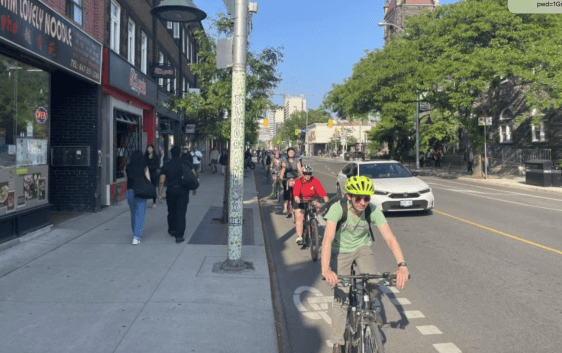Commuting times could rise dramatically — and by as much as 42 minutes each way in San Francisco — if cities don't make it safe for residents to return public buses and trains, and stay out of cars, when the coronavirus pandemic is over, a new study reveals.
Researchers at Vanderbilt University have modeled a range of possible scenarios for dozens of U.S. cities based on their pre-pandemic traffic patterns and mode share ratios. In the best-case scenario, the researchers assumed that one out of four transit riders would switch to driving; in the most plausible worst-case scenario, three out of four would ditch their bus or rail commute for driving.
"It is important to note that we are not predicting a specific mode shift rate — say, that one out of four riders will drive post-pandemic — but rather building a tool to help understand the potential consequences of adding more cars on the road," said Dan Work, one of the study authors. "We hope the main takeaway is a simple model that can help decision makers reason through recovery strategies."
Those recovery strategies could be particularly crucial in San Francisco, which could have a serious carpocalypse in store if they don't take action now. If just one in four transit users in the Bay switched to driving for their commute, the time it would take to make the average one-way trip to the office would be increased by 10 minutes. If three in four riders did it, commute times would increase by a stunning 42 minutes. Each way.
The numbers are sobering, especially for dense, transit-rich cities that simply don't have the road space for a shift towards driving.
"If San Francisco retreats in a fear-based way to private cars, the city dies with that, including the economy," said San Francisco MTA Director Jeffrey Tumlin in a recent interview published on Streetsblog SF. "Why? Because we can’t move more cars. That’s a fundamental geometrical limit. We can’t move more cars in the space we have."
The NorCal metropolis offers a dramatic example, but it's not alone.
New York City's street grid would also have a hard time absorbing the up to 3.76 million added traffic hours the researchers estimate the city's newly minted drivers could add to the roads every single day. Even cities with relatively fewer transit users and larger road networks would be hit hard: car-dependent Philadelphia could experience up to a seven minute increase in the average driving commute if enough people got off of the city's fractured transit network, SEPTA in big enough numbers.
Even the cities with the very lowest projected increases in commute times shouldn't be celebrating too much. Researchers found that drivers in transit-starved Tulsa, Okla. would only increase of 30 seconds on their commute time if every single public transportation user somehow magically got a car — but remember, that's 30 seconds added onto every single one-way commute. Since most drivers take to the road at least twice a day or more, even modest increases could still paralyze the road network with gridlock.
And it's not just about commute times. There's simply no doubt that adding more cars to our roads will kill more people outside motor vehicles — whether through collisions, climate change, or simply by making drivers themselves more sedentary, which can lead to a raft of deadly health conditions.
The researchers pointed out that no model is perfect, and this model could change in response to a universe of uncertain factors, such as an increase in remote work, a lingering economic slump, and more work by transit agencies to restore confidence quickly. And there are reasons to hope even the model's conservative scenarios overestimate the ridership drain: one recent study suggests that, at least at this stage of the pandemic, only about 20 percent of transit riders think they'll no longer use public transportation at all once the lockdowns ease — five percent fewer than the model's most pessimistic projection.
sBut even with those caveats, the numbers should still disturb us — because we had far too many cars on our roads before coronavirus made millions of Americans newly terrified of taking public transportation. And governments at all levels need to plan — now — to reduce new car trips, including developing aggressive protocols to make sure public transit is uncrowded, frequently sanitized, and easily accessible, both for the sake of riders and the transit operators we rely on.





